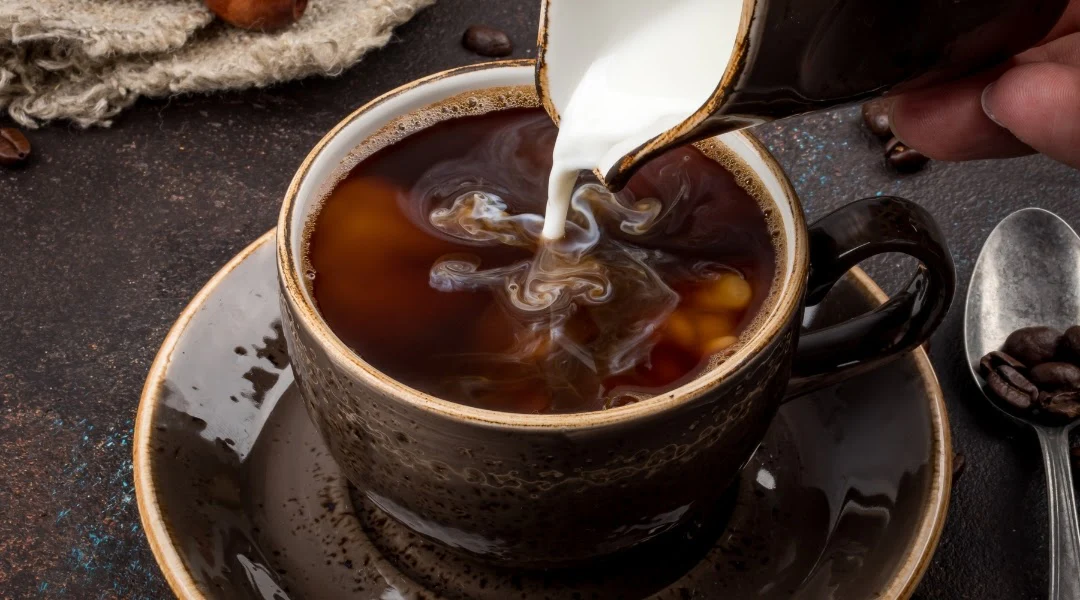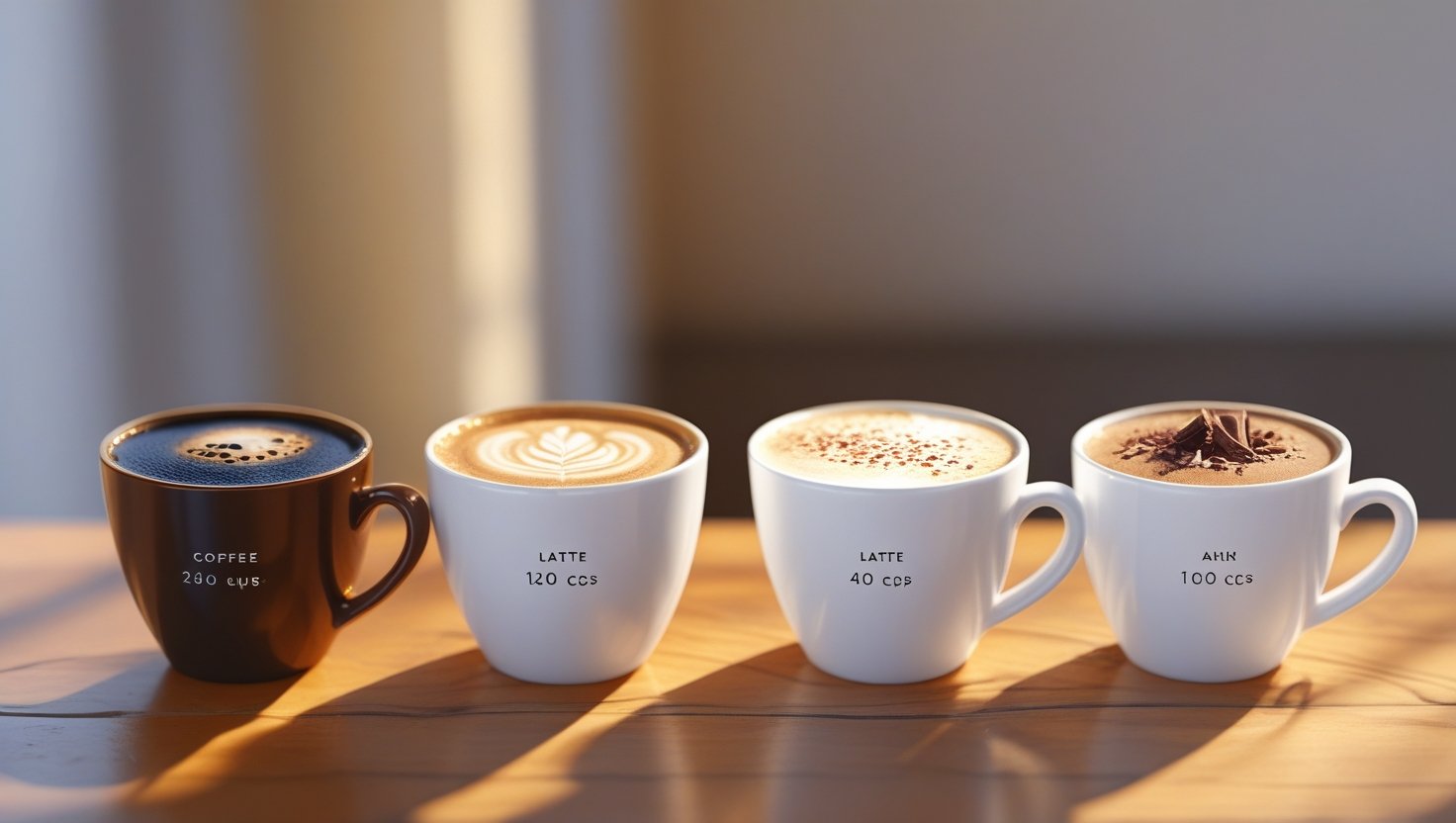Does Coffee Have Calories?
Here’s the Truth About What’s In Your Cup

The Morning Ritual That Raises a Question
It’s 7 a.m. You shuffle into the kitchen, still half asleep, and fire up your coffee maker. That first cup is more than a beverage—it’s a ritual. As the smell fills the air, your mind starts to wake up. But somewhere in between the first sip and your second cup, you pause and think:
“Wait… does this have calories?”
For many people, especially those watching their weight or tracking macros, this question matters. Whether you’re doing intermittent fasting, counting calories, or just curious—understanding what’s really in your daily brew can help you sip smarter.
Let’s break down the full story of calories in coffee—from a plain black cup to the sugary concoctions found at your local café.
Do Calories Exist in Black Coffee?
Yes, but barely.
A standard 8-ounce (240 ml) cup of black coffee contains:
-
2 calories
-
0 grams of fat
-
0 grams of sugar
-
0 grams of protein
That’s because brewed coffee is made by passing water through ground coffee beans. The water extracts oils, caffeine, antioxidants, and flavor compounds—but not much in terms of carbs, fats, or proteins (which are what calories are made of).
So unless you’re drinking gallons of it, black coffee is essentially calorie-free.
✅ Fun Fact: Espresso has about 1 calorie per ounce, so a standard 2-ounce shot has 2 calories.
What Adds Calories to Coffee?
The moment you start adding extras, you’re not just drinking coffee—you’re drinking a calorie-laden beverage.
Here’s a look at common add-ins and their calorie impact:
| Add-In | Amount | Calories |
|---|---|---|
| Whole milk | 2 tbsp | 18 |
| 2% milk | 2 tbsp | 15 |
| Skim milk | 2 tbsp | 10 |
| Half and half | 2 tbsp | 40 |
| Heavy cream | 2 tbsp | 100 |
| Sugar (white) | 1 tsp | 16 |
| Flavored creamer | 1 tbsp | 35 |
| Almond milk (unsweetened) | 2 tbsp | 5 |
| Oat milk (unsweetened) | 2 tbsp | 10 |
| Honey | 1 tsp | 21 |
Now imagine adding 2 tbsp of half and half + 2 tsp of sugar to your coffee:
-
40 (half and half) + 32 (sugar) = 72 calories
Not bad once… but multiply that by 3 cups a day, and you’re looking at over 200 “hidden” calories.
High-Calorie Coffee: Watch Out for Café Favorites
Some coffeehouse drinks come with a shocking calorie count. Here’s what you might be sipping:
| Drink (Grande – 16 oz) | Approx. Calories |
|---|---|
| Black Coffee | 5 |
| Caffè Latte (whole milk) | 190 |
| Caffè Mocha (with whip) | 370 |
| Caramel Macchiato | 250 |
| Frappuccino (varies) | 300–500+ |
| Pumpkin Spice Latte | 390 |
😲 A medium mocha with whipped cream might have more calories than a cheeseburger.
What About Iced Coffee?
Iced coffee—if brewed black and poured over ice—has the same near-zero calorie count as hot coffee. However, many store-bought or café iced coffees come pre-sweetened or mixed with milk and syrups.
Always check the label or ask your barista if you’re unsure. Some bottled iced coffees contain over 20 grams of sugar and 150+ calories per bottle.
Coffee and Fasting: Does It Break a Fast?
A common question among intermittent fasters is:
“Will coffee break my fast?”
-
Black coffee? No. It’s safe and even encouraged due to appetite-suppressing and metabolism-boosting effects.
-
Coffee with cream or sugar? Yes. Even small amounts of calories can trigger an insulin response, especially if you’re fasting for autophagy or blood sugar regulation.
That said, if you’re doing a calorie-restricted fast rather than a strict one, adding up to 50 calories might not be a deal breaker.
Coffee in Different Diets
Here’s how coffee fits into popular diets:
☕ Keto Diet
-
Black coffee = ✅
-
Add butter, MCT oil, or heavy cream = ✅ (adds fat, no carbs)
-
Sweeteners = Use stevia or monk fruit
🥗 Paleo
-
Black coffee = ✅
-
Creamer = ✅ if it’s non-dairy and natural
-
No artificial sweeteners
🌿 Vegan
-
Black coffee = ✅
-
Use plant-based milks (check for sweeteners)
🥚 Whole30
-
Black coffee = ✅
-
No dairy, no added sugar
Health Benefits of Low-Calorie Coffee
Even with its minimal calorie count, coffee brings a surprising amount of health perks:
-
Boosts metabolism: Caffeine can increase your metabolic rate by 3–11%
-
Improves brain function: Helps with memory, mood, alertness, and energy
-
Lowers disease risk: Studies show regular coffee drinkers have lower risks of Type 2 diabetes, Alzheimer’s, and Parkinson’s
-
Rich in antioxidants: Coffee is one of the biggest sources of antioxidants in the Western diet
📊 Stat: According to Harvard Health, moderate coffee intake (3–5 cups per day) is linked to a longer lifespan and reduced risk of chronic diseases.
Just don’t cancel out the benefits with sugar overload.
Hidden Calories in Store-Bought Blends
Pre-flavored ground coffees or K-Cups may have:
-
Added sweeteners
-
Artificial flavors
-
Oils or fillers
If you’re drinking flavored coffee and it tastes sweet without adding sugar, check the label—it might have added calories.
Make Your Coffee Work for You
If you’re watching your calorie intake, try these tips:
-
Stick to black coffee or use unsweetened almond/oat milk
-
Add cinnamon or cocoa powder for flavor without calories
-
Use natural sweeteners like stevia or monk fruit
-
Dilute your coffee into iced versions for volume without calories
-
Limit café drinks to occasional treats
Small changes can add up—especially if you drink coffee every day.
One Brand’s Take on Sustainable Sipping
At Coffea Alchemy, we believe coffee is more than a drink—it’s a lifestyle. Our mission is to help people enjoy coffee mindfully, whether it’s understanding where it’s sourced or how it fits into your wellness goals. And it all starts with what’s in your cup—nutritionally and ethically.
Final Sip: So, Does Coffee Have Calories?
In its purest form, coffee is almost calorie-free. But what we add to it can turn a zero-calorie beverage into a sugary dessert in a cup. If you’re trying to lose weight, stay energized, or simply sip smarter—understanding the calorie count in coffee is a great place to start.
Because sometimes, the biggest impact comes from the smallest decisions—like how you take your morning brew.
So, how do you take your coffee?
Related Post
Our newsletter
Subscribe to our weekly newsletter & keep up with our latest recipes and organized workshops. You can unsubscribe at any time.


